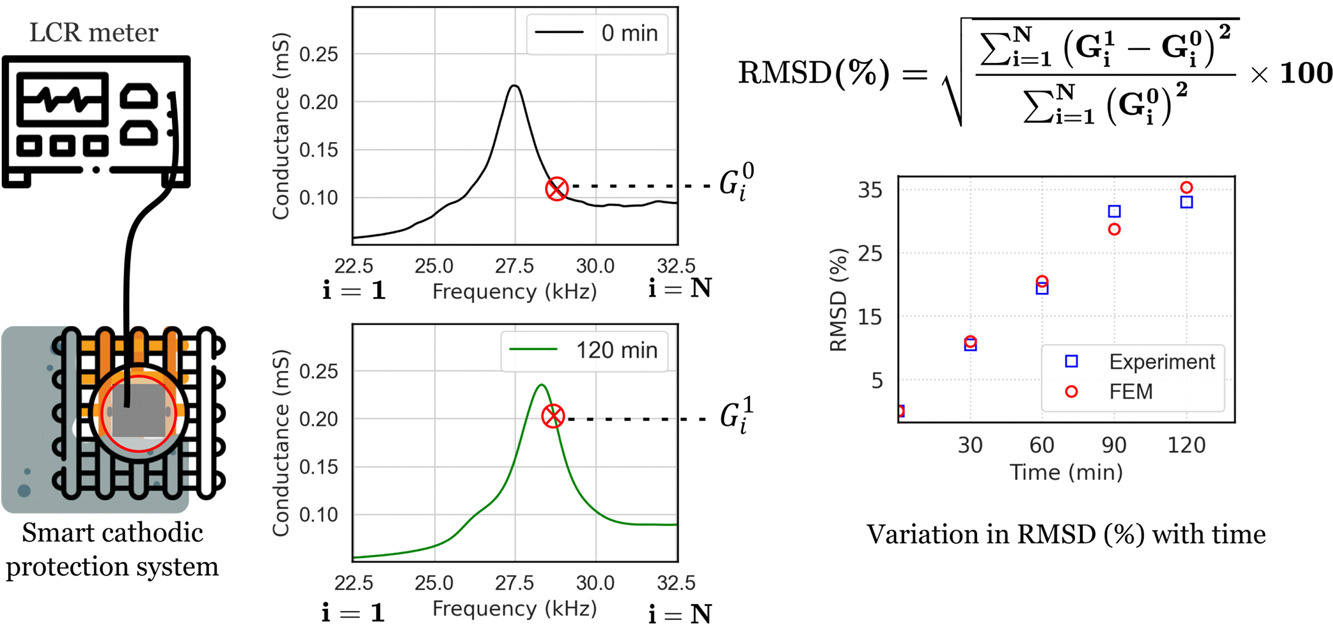Performance evaluation of electro-mechanical impedance based state of health estimation of sacrificial anodes in reinforced concrete structures
Published in Construction and Building Materials, 2022

Sacrificial anodes have long been employed as a convenient and affordable method to protect reinforcing steel against corrosion in concrete structures. However, their own degradation is rarely assessed in situ. This paper investigates the feasibility of using electro-mechanical impedance (EMI) sensing with PZT transducers bonded to sacrificial anodes to track their health inside conductive mortar and reinforced concrete.
Accelerated corrosion experiments under impressed current demonstrate that the root mean square deviation (RMSD) of conductance spectra provides a highly sensitive metric for monitoring progressive anode degradation. The study also develops analytical and finite element models that reproduce the observed nonlinear RMSD evolution with corrosion time, linking the trend to delamination dynamics of corrosion by-products and associated damping.
Unlike conventional destructive or indirect electrochemical methods, this approach enables non-destructive, deterministic, and real-time state-of-health monitoring of sacrificial anodes embedded within concrete systems.
Key Findings
- RMSD of EMI spectra sensitively tracks degradation of zinc sacrificial anodes in mortar and concrete.
- RMSD evolution is nonlinear with corrosion time, explained by delamination and damping effects.
- Analytical and finite element models agree with experimental observations.
- Provides a non-destructive, real-time method for monitoring anode health in reinforced concrete structures.
Recommended citation: Tamhane D. Performance evaluation of electro-mechanical impedance based state of health estimation of sacrificial anodes in reinforced concrete structures. Constr Build Mater. 2022.
Download Paper | Download Bibtex
